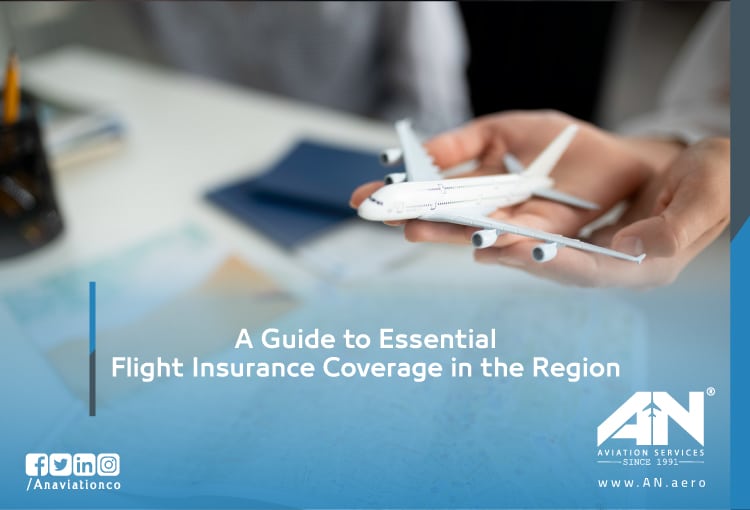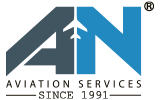
Having the right insurance is essential when flying in the Middle East and Africa. Not only does it help you stay financially protected, but it’s also required by law. Whether operating a commercial jet or a private aircraft, understanding insurance requirements ensures smooth flights and helps you avoid potential legal issues. Let’s break down the flight insurance requirements you need to know.
Why Aviation Insurance is Non-Negotiable?
Aviation insurance isn’t just a good idea, it’s a must. Think of it as your safety net. Without the right insurance, you’re risking financial disaster. Accidents, injuries, or even natural disasters can cause huge costs, and that’s where your insurance policy comes in. It helps you cover repairs, medical bills, or legal expenses. In many cases, insurance is also a legal requirement to operate in certain regions.
Legal Mandates vs. Operational Safeguards:
There are two key reasons you need insurance: legal mandates and operational safeguards.
- Legal mandates are the government-required policies that you must follow to fly safely.
- Operational safeguards are the insurance policies that help protect your aircraft, passengers, and crew during day-to-day operations. These might not be legally required everywhere, but are essential for smooth operations.
Financial Protection Against Liabilities & Accidents:
If something goes wrong, the last thing you want is to be stuck with huge financial costs. Insurance provides financial protection against accidents, passenger injuries, and other liabilities. It can cover the costs of medical care, legal fees, and even compensation for damages.
Mandatory Insurance Policies for Regional Flights
Different countries have different insurance rules, but there are a few key policies you’ll always need:
1. Aircraft Hull & Liability Insurance
This is one of the most common and crucial policies.
- Hull Insurance covers damage to the aircraft, whether it’s from accidents, collisions, or natural disasters.
- Liability Insurance protects you from claims for injury or property damage caused by your aircraft.
What It Covers:
- Accidents.
- Natural disasters (like hailstorms or lightning strikes).
Commercial vs. Private Aircraft:
Commercial aircraft often require more extensive coverage than private aircraft, due to the increased risks involved in commercial flights.
2. Third-Party Liability Insurance
This policy covers damages caused to other people or property by your aircraft. For example, if your aircraft accidentally damages a building or injures someone on the ground, this coverage will pay for repairs and medical bills.
3. Passenger Injury & Property Damage Protection
This policy protects passengers in case of injury or death. It also covers damage to their personal belongings (like luggage) during the flight.
Minimum Coverage Requirements by Country:
Countries have different minimum coverage limits, so always check with local regulations. For example, South Africa and Nigeria have strict enforcement of passenger injury insurance requirements.
4. Passenger Liability Insurance
Passenger liability insurance covers the costs if a passenger gets injured or killed during your flight. It’s mandatory for most countries, and in some cases, it’s required before you can get flight permits.
5. Cargo & Baggage Liability Insurance
If you’re transporting goods, you’ll need coverage for any cargo damage or loss. This is especially important when shipping valuable goods like electronics or fine art.
Protecting Shippers Against Loss/Damage:
If your cargo is high-value, make sure your insurance covers it properly. Some goods require special coverage for high-value cargo to ensure you’re protected in case of damage or loss.
Regional Variations in Insurance Requirements
Insurance requirements can vary from country to country, and it’s important to be aware of these regional differences.
Africa-Specific Insurance Regulations
Certain African countries have unique insurance regulations. For example, Nigeria has additional coverage requirements for aircraft operations within its airspace. Always check the specific insurance rules for the countries where you’re flying.
Common Minimum Coverage Limits:
Most countries have minimum insurance coverage limits for both liability and passenger injuries. Make sure you meet these requirements to stay compliant with local laws.
Overflight & Landing Permit Insurance Clauses
Some countries require you to show proof of insurance before you can get a permit to fly over or land in their airspace. Make sure you have your insurance coverage ready when applying for permits. Countries may even require additional endorsements to meet their specific needs.
Countries with Strict Enforcement
Countries like South Africa and Nigeria enforce their insurance requirements very strictly. Make sure you’re familiar with their rules to avoid delays or fines.
Additional Recommended Coverage
Beyond the basic policies required by law, there are a few more types of insurance that could be helpful, depending on your operation.
1. Ground Risk Insurance
This insurance covers you when your aircraft is on the ground during taxiing, loading, or maintenance. It’s essential for handling ground operations safely.
2. In-Flight Emergency Coverage
Emergencies can happen mid-flight, so having medical evacuation or air ambulance coverage is critical. This ensures you can get passengers the medical attention they need quickly in case of an emergency.
Challenges in Securing Proper Aviation Insurance
Getting the right insurance coverage isn’t always easy. Here are a few challenges you might face:
High Premiums & Underwriting Restrictions
Some regions or types of operations have higher premiums due to increased risk. Insurance companies might be stricter in areas with frequent accidents or challenging weather conditions.
Policy Exclusions & Fine Print Risks
Not all policies cover everything. You need to read the fine print carefully to avoid being surprised by exclusions. Some policies might exclude certain types of damage or coverage, so always check what’s included.
Keeping Up with Regulatory Changes
Regulations change over time, and so do insurance requirements. Be sure to stay updated on the latest rules so your insurance coverage always meets local standards.
How AN Aviation Services Simplifies Insurance Compliance?
At AN Aviation, we make insurance compliance easy. We help you navigate the complex insurance requirements for your flights, ensuring you’re covered and following the rules. With our expertise, you can focus on flying while we take care of the insurance details. Let us handle the paperwork, so you can keep your operations running smoothly and without stress.
Having the right flight insurance isn’t just about staying compliant; it’s about protecting your business and your passengers. From mandatory hull insurance to emergency coverage, make sure you’re fully covered for every situation. With AN Aviation by your side, you can simplify insurance compliance and focus on what you do best flying safely.

